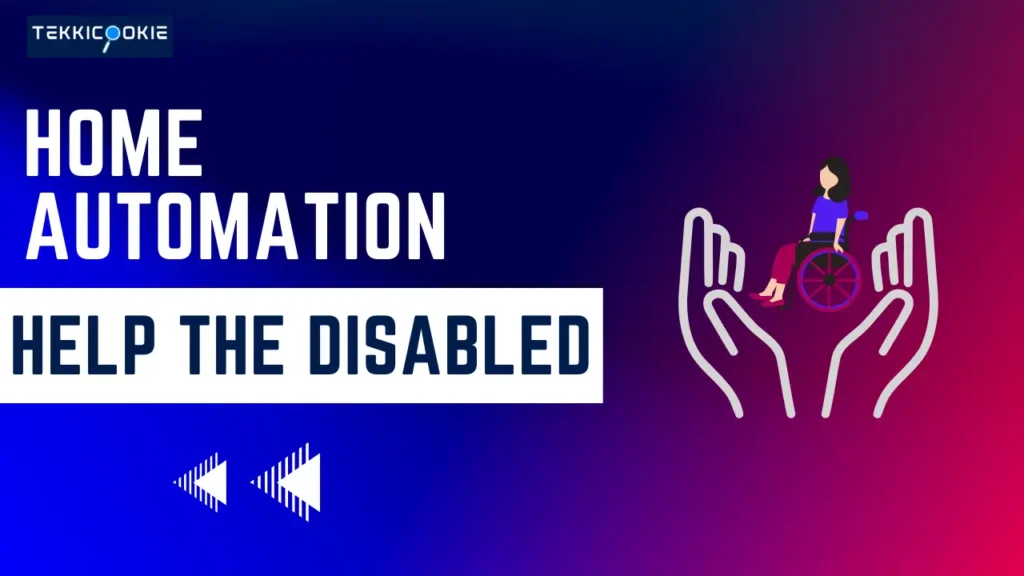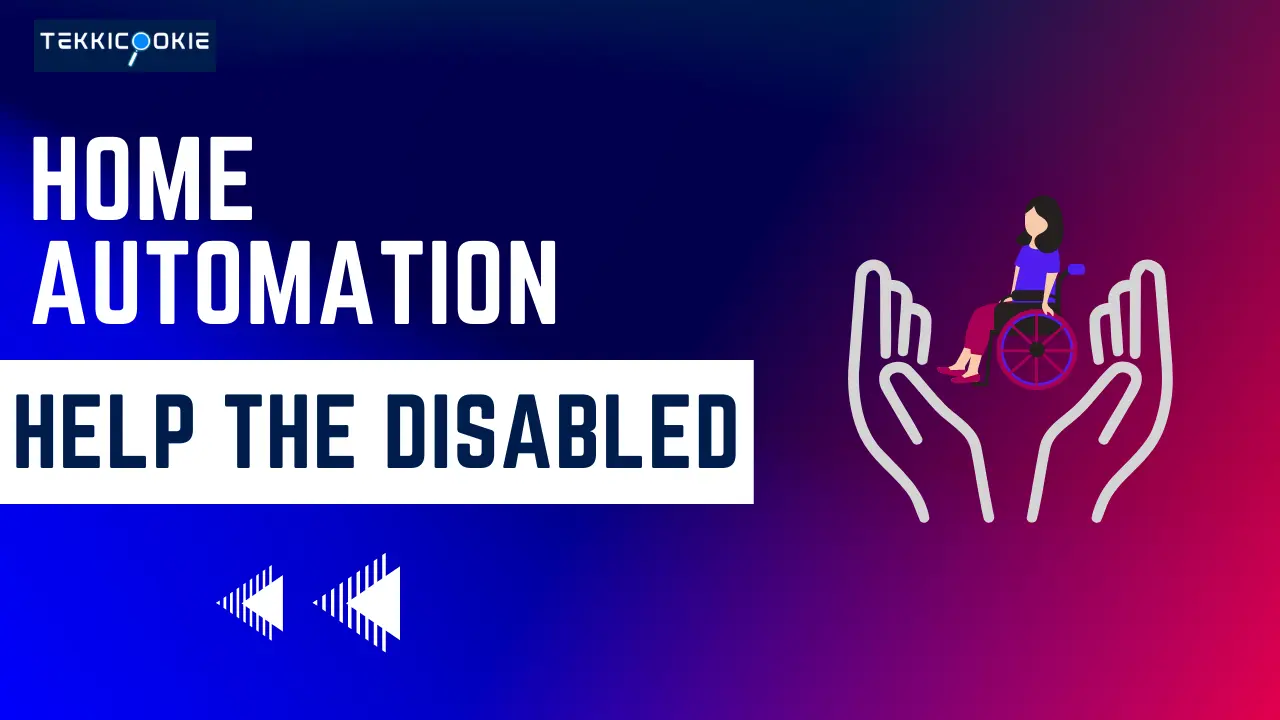In today’s world, home automation has emerged as a revolutionary technology that transcends the boundaries of convenience. While it certainly offers a range of benefits for everyone, its impact is particularly profound for individuals with disabilities.
By leveraging the power of automation, disabled individuals can customize their living spaces to suit their unique needs, fostering accessibility, independence, safety, and energy efficiency. In this article, we will delve into the various ways home automation positively impacts the lives of the disabled, offering them a new level of comfort, control, and empowerment.

Accessibility and Independence
Living with a disability often means navigating physical limitations that can hinder independence.
However, home automation provides tailored solutions to overcome these barriers. One of the key aspects of accessibility in a smart home is adaptive lighting systems.
These systems allow individuals to adjust the brightness, colour, and intensity of lights, enhancing visibility and reducing eye strain.
With the ability to control lighting through voice commands or mobile applications, individuals can create the perfect ambience to suit their preferences and needs.
In addition to lighting, automated door and window controls contribute significantly to accessibility and independence.
Motorized doors and windows can be controlled remotely, eliminating the need for manual operation.
This feature proves invaluable for individuals with mobility challenges, making it easier for them to enter or exit a room without physical exertion.
Furthermore, automated blinds and curtains offer accessibility benefits, as they can be controlled through voice commands or programmed schedules, providing optimal natural light, privacy, and accessibility.
Voice-Activated Assistants for Hands-Free Control
Voice-activated assistants have become an integral part of home automation, and they play a vital role in empowering disabled individuals.
Virtual personal assistants like Siri, Alexa, and Google Assistant respond to voice commands, enabling hands-free control over various home automation devices.
These intelligent assistants can perform tasks such as turning lights on or off, adjusting temperature settings, playing music, or even providing information on demand.
With simple voice commands, disabled individuals can effortlessly control their living environment, reducing their reliance on physical interactions with devices.
Moreover, there are specialized voice-activated home automation systems designed to cater specifically to the needs of disabled individuals.
These systems offer enhanced accessibility features and expanded compatibility with assistive technologies.
Through integration with assistive devices and voice recognition technology, individuals can interact with their smart homes more intuitively and effectively.
Read More: What is a Smart Home for the Elderly?
Safety and Security
Safety is a primary concern for anyone, but it holds particular significance for individuals with disabilities.
Home automation offers a range of features that enhance safety and security within the living environment.
One of the key elements is automated home surveillance. Equipped with motion detection and video monitoring capabilities, smart surveillance systems allow users to keep a vigilant eye on their surroundings.
Real-time video feeds and instant notifications provide a sense of security and peace of mind, enabling individuals to respond promptly to any potential threats or emergencies.
Smart sensors and alarms further contribute to the safety aspect of home automation. Fire and smoke detectors equipped with automation capabilities can detect the presence of smoke or fire and trigger immediate alerts.
This is especially crucial for individuals with disabilities who may face challenges in perceiving sensory cues.
Similarly, carbon monoxide detectors provide an additional layer of protection by alerting residents about the presence of this silent but deadly gas.
These automated safety features ensure that individuals can quickly respond and take appropriate action, preventing potential harm or loss.
Energy Efficiency and Environmental Control
Home automation not only enhances accessibility and safety but also promotes energy efficiency and environmental control. Smart thermostats are instrumental in achieving climate regulation while conserving energy.
These intelligent devices allow individuals to control and program temperature settings based on their preferences and schedules.
With the ability to learn and adapt to user behaviour, smart thermostats optimize energy consumption, resulting in cost savings and reduced environmental impact.
Disabled individuals can easily adjust the temperature of their living spaces through voice commands or mobile applications, ensuring optimal comfort and energy efficiency.
Automated blinds and curtains contribute to both energy efficiency and environmental control.
These motorized window coverings can be programmed to open or close at specific times, allowing natural light to enter the room or providing privacy when needed.
By effectively managing natural light, individuals can reduce their reliance on artificial lighting and regulate the temperature within their homes.
Additionally, for individuals with limited mobility, the ability to control blinds and curtains through voice commands or remote access eliminates physical barriers, making it easier to manage lighting and privacy preferences.
Assistive Technologies Integration
The integration of home automation with assistive technologies plays a pivotal role in improving the lives of disabled individuals.
Smart homes can seamlessly connect with a range of medical devices, enabling remote monitoring and alerts.
For example, individuals with chronic conditions can benefit from remote health tracking systems that provide real-time information to both the user and healthcare professionals.
Medication management systems integrated with home automation can remind individuals to take their medications at the prescribed times, ensuring adherence to treatment plans.
Smart home control through assistive devices offers another layer of convenience and accessibility.
Wheelchair-mounted controllers allow individuals to operate home automation devices without the need to physically reach switches or controls.
These controllers can be customized to the user’s specific needs and provide a more intuitive way to interact with the smart home environment.
Additionally, smart wearables, such as wristbands or voice-activated devices, offer portable control options, allowing users to command their home automation systems from anywhere within their living space.
Read More: What are the Weaknesses of Home Automation?
Communication and Connectivity
Communication is a fundamental aspect of human interaction, and home automation facilitates improved communication within the home and beyond.
Intercom and video calling systems connect different areas of the house, allowing seamless communication between family members and caregivers.
Individuals with disabilities can easily communicate with others in different rooms, ensuring that they can call for assistance or engage in conversations without physical proximity.
Integration with smartphones and tablets further enhances communication and control. Mobile applications provided by home automation systems enable individuals to manage and control their smart homes remotely.
With the ability to adjust settings, receive notifications, and even view live camera feeds, individuals can stay connected and in control, regardless of their physical location.
Moreover, accessibility features within these applications make them user-friendly for individuals with visual or hearing impairments, promoting inclusivity and ease of use.
Smart Home Automation Hubs
Smart home automation hubs serve as the central control and management system for interconnected home automation devices.
They provide a unified interface and allow individuals to manage their smart homes from a single platform.
The hubs are compatible with various protocols, ensuring seamless integration with devices from different manufacturers, thereby offering a diverse range of choices for users.
Personalization and customization are key features of smart home automation hubs. Users can program routines and schedules that align with their unique needs and preferences.
For example, individuals can set up a morning routine that gradually adjusts lighting, opens blinds, and plays their favourite music, creating a personalized and enjoyable start to the day.
Additionally, smart home automation hubs often offer integration with third-party applications, expanding the possibilities and allowing individuals to connect their smart homes with a wide range of services and technologies.
Overcoming Barriers and Challenges
While home automation offers immense benefits, certain barriers and challenges need to be addressed to ensure its widespread adoption among disabled individuals.
Cost considerations often arise when exploring home automation options. However, it’s important to note that there is a wide range of solutions available to accommodate different budgets.
Investing in home automation can bring long-term savings in energy consumption, home maintenance, and potential healthcare costs.
Disabled individuals can also explore financial assistance programs or grants available to support the adoption of home automation technologies.
Technical expertise and support are crucial aspects of successful home automation implementation.
Manufacturers often provide installation and setup assistance to ensure a seamless transition.
Additionally, training and user-friendly interfaces make it easier for individuals with disabilities to operate and make the most of their home automation systems.
Continuous customer support and updates from manufacturers help address any technical issues or compatibility concerns that may arise.
Conclusion
Home automation represents a paradigm shift in how individuals with disabilities can experience their living spaces.
By leveraging automation, individuals can customize their homes to meet their unique needs, promoting accessibility, independence, safety, and energy efficiency.
Through adaptive lighting, voice-activated control, advanced safety features, integration with assistive technologies, and centralized management systems, home automation empowers disabled individuals to navigate their surroundings with greater ease, comfort, and control.
As technology continues to evolve, it is essential to embrace and explore the possibilities that home automation offers, ensuring a brighter and more inclusive future for people with disabilities.
Hey there, folks! If you have liked the article then don’t forget to give us a follow on our social media channels below. That way, you’ll be the first to know about all the exciting updates!
